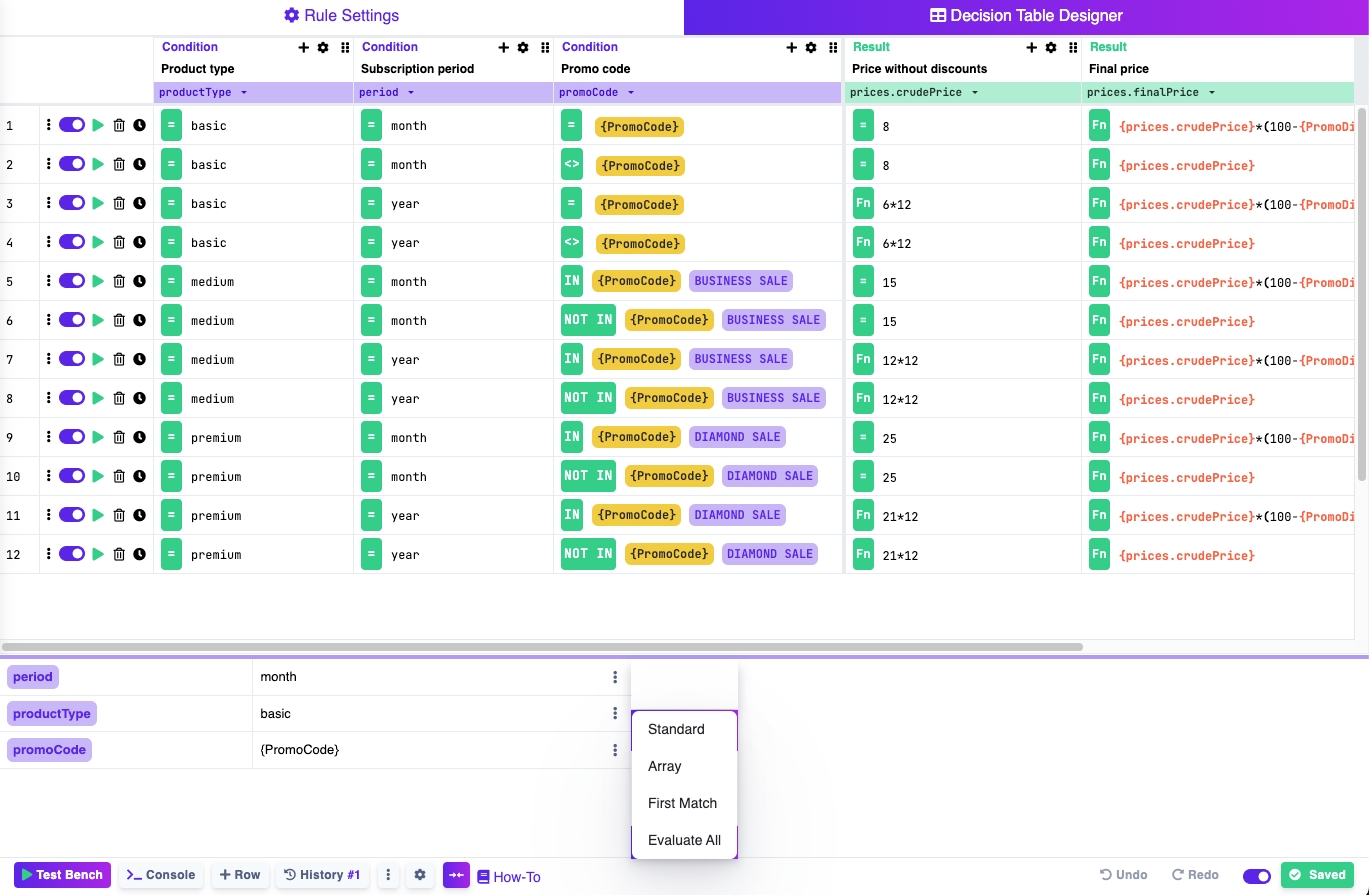Execution Strategy
Execution strategy allows you to change the outcome produced by the rule solver. There are several options for the execution strategy described below.
List of execution strategies
Standard strategy (default)
Array strategy
First Match strategy
Evaluate All strategy - Available only in decision tables
You can easily set the execution strategy for solver API by adding the X-Strategy header. If the header is not specified, the system automatically chooses the STANDARD strategy.
X-Strategy
STANDARD
X-Strategy
ARRAY
X-Strategy
FIRST_MATCH
X-Strategy
EVALUATE_ALL

The distinct types of execution strategies are described below.
Standard
If 2 lines are matching the input, the output will be all the matching rows. The order will be the same as the order of rows in the rule.
The output looks like this:
First match
If 2 lines are matching the input, the output is returning just the first matching line from the rule (table, script).
The output looks like this:
Array
If 2 lines are matching the input, the outputs are returned in the array format.
The output looks like this:
Evaluate all
This execution strategy allows you to obtain satisfiability based on the input conditions of all rows in the decision table. If your decision table has N rows, the evaluation response will also be N objects. For each output, you will have an indication of whether the line was met or not.
The output can looks like this: